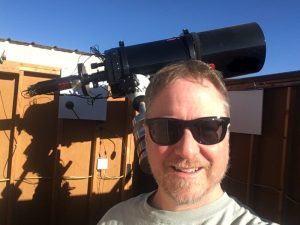External Partners
- U. Ariz
- UMD
- JHU/APL
Project Description
Recent in situ observations of comets have highlighted the importance of volatiles other than water in driving comet activity even at small heliocentric distances. CO2 and CO have been shown to be particularly important. Rosetta observations are suggesting new ideas about the primary drivers of comet activity at large heliocentric distances. These developments are driving a paradigm shift in comet studies which calls for the reanalysis of all comet observations. By archiving with the PDS a significant and unique collection of wide-field space-based comet observations, our effort provides data critical to answering this call.
The Midcourse Space eXperiment (MSX), the Galaxy Evolution Explorer (GALEX) and the Swift Ultraviolet/Optical Telescope (Swift/ UVOT) are non-Planetary Science Division space telescopes which have observed more than two dozen comet apparitions since 1996. Three were contemporaneous with spacecraft flybys and four were observed on two apparitions each. Comets of all dynamical classes have been observed, most over a range of heliocentric distances, the largest of which being 0.8 — 5 AU.
Unique features of the MSX, GALEX, and Swift/UVOT observations include their wide fields of view (17 arcmin — 10 degrees) and their sensitivity to UV emissions. In fact, for emission longward of H-Lyman alpha, these spacecraft have collected almost all of the available wide-field UV data! The wide-field far-UV capabilities MSX and GALEX make possible the study of atomic end-members H, O, C, and S, which have very long lifetimes. Scientific fruit has already begun in this direction with a sensitive measurement of the ionization lifetime of carbon by Morgenthaler et al. (2011). Swift is an active astrophysics mission and is still adding to its list of 19 comets observed, 9 of which will be archived with the support of our proposed project. Swift’s imaging and spectro-imaging capabilities in the UV and visible enable it to study the suite of molecular emission diagnostic of fragments of volatile species: CS, OH, CN, C3, and C2. Science results from Swift/UVOT observations have already begun to flow (e.g., Bodewits et al. 2011, 2014, 2015).
Our proposed efforts will support archiving of MSX, GALEX, and Swift/UVOT data in the Planetary Data System (PDS) in a format that is accessible to comet scientists. The MSX data covering 1000A — 9000A with a variety of imaging and long-slit detectors and imagers, has never been publicly archived. The GALEX and Swift data are publicly archived, but the data were processed with the assumption that the comets were fixed targets. PI Morgenthaler and Co-I Bodewits have developed the necessary algorithms to accommodate moving targets and, with the support of our proposed effort, will apply them and archive the resulting products in the PDS.
We will also archive a unique set of ground-based observations of C/1996 B2 (Hyakutake) and C/1995 O1 (Hale-Bopp) which complement space-based observations. The data include a rich set of synoptic observations of H2O+ in Hale-Bopp which have never been published and velocity resolved H-alpha observations of Hale-Bopp which enable the testing of the hydrogen coma model used to interpret the SOHO/SWAN, which has observed 56 comets since 1996.
Archiving these data will increase the amount and quality of digital information and data products available for planetary science research and exploration…. and is therefore highly relevant to the PDART.

